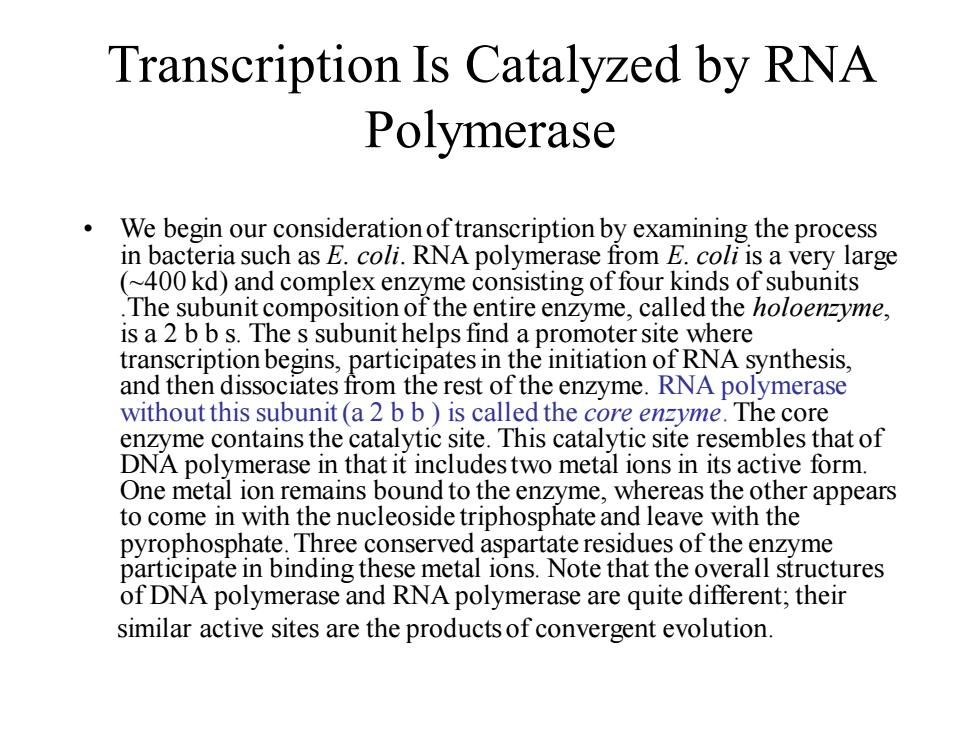
Transcription Is Catalyzed by RNA Polymerase We begin our consideration oftranscription by examining the process in bacteria such as E.coli.RNA polymerase from E.coli is a very large (~400 kd)and complex enzyme consisting of four kinds of subunits The subunit composition of the entire enzyme,called the holoenzyme, is a 2 bb s.The s subunit helps find a promoter site where transcription begins,participates in the initiation of RNA synthesis. and then dissociates from the rest of the enzyme.RNA polymerase without this subunit (a 2 bb is called the core enzyme.The core enzyme contains the catalytic site.This catalytic site resembles that of DNA polymerase in that it includes two metal ions in its active form. One metal ion remains bound to the enzyme,whereas the other appears to come in with the nucleoside triphosphate and leave with the pyrophosphate.Three conserved aspartate residues of the enzyme participate in binding these metal ions.Note that the overall structures of DNA polymerase and RNA polymerase are quite different;their similar active sites are the products of convergent evolution
Transcription Is Catalyzed by RNA Polymerase • We begin our consideration of transcription by examining the process in bacteria such as E. coli. RNA polymerase from E. coli is a very large (~400 kd) and complex enzyme consisting of four kinds of subunits .The subunit composition of the entire enzyme, called the holoenzyme, is a 2 b b s. The s subunit helps find a promoter site where transcription begins, participates in the initiation of RNA synthesis, and then dissociates from the rest of the enzyme. RNA polymerase without this subunit (a 2 b b ) is called the core enzyme. The core enzyme contains the catalytic site. This catalytic site resembles that of DNA polymerase in that it includes two metal ions in its active form. One metal ion remains bound to the enzyme, whereas the other appears to come in with the nucleoside triphosphate and leave with the pyrophosphate. Three conserved aspartate residues of the enzyme participate in binding these metal ions. Note that the overall structures of DNA polymerase and RNA polymerase are quite different; their similar active sites are the products of convergent evolution
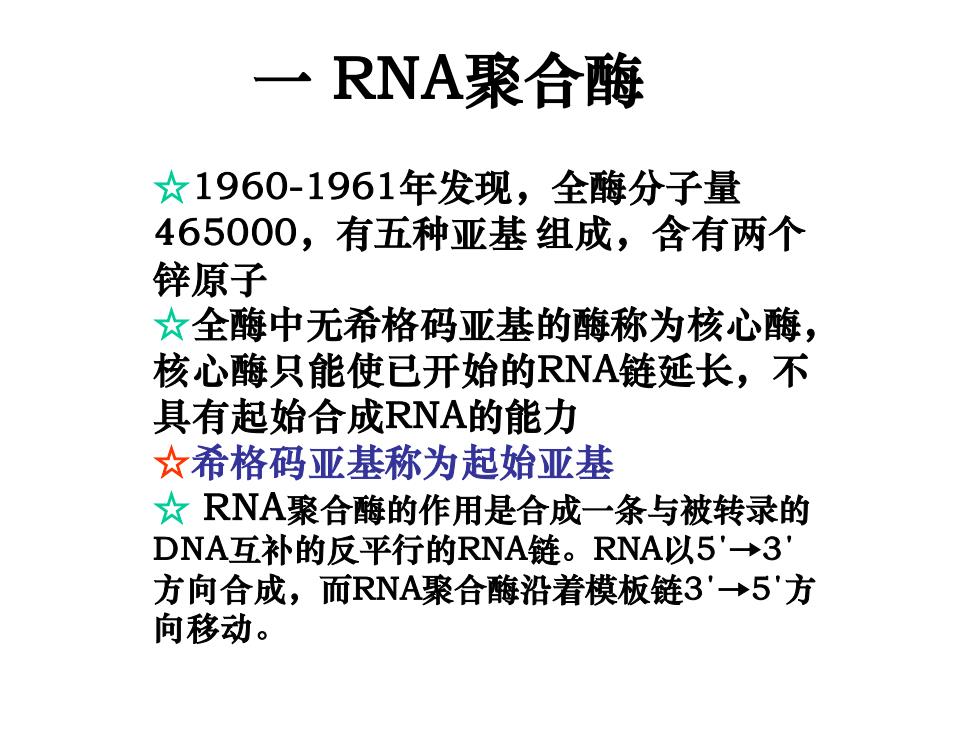
RNA聚合酶 ☆1960-1961年发现,全酶分子量 465000,有五种亚基组成,含有两个 锌原子 ☆全酶中无希格码亚基的酶称为核心酶, 核心酶只能使已开始的RNA链延长,不 具有起始合成RNA的能力 ☆希格码亚基称为起始亚基 ☆RNA聚合酶的作用是合成一条与被转录的 DNA互补的反平行的RNA链。RNA以5'→3' 方向合成,而RNA聚合酶沿着模板链3'→5'方 向移动
一 RNA聚合酶 ☆1960-1961年发现,全酶分子量 465000,有五种亚基 组成,含有两个 锌原子 ☆全酶中无希格码亚基的酶称为核心酶, 核心酶只能使已开始的RNA链延长,不 具有起始合成RNA的能力 ☆希格码亚基称为起始亚基 ☆ RNA聚合酶的作用是合成一条与被转录的 DNA互补的反平行的RNA链。RNA以5΄→3΄ 方向合成,而RNA聚合酶沿着模板链3΄→5΄方 向移动
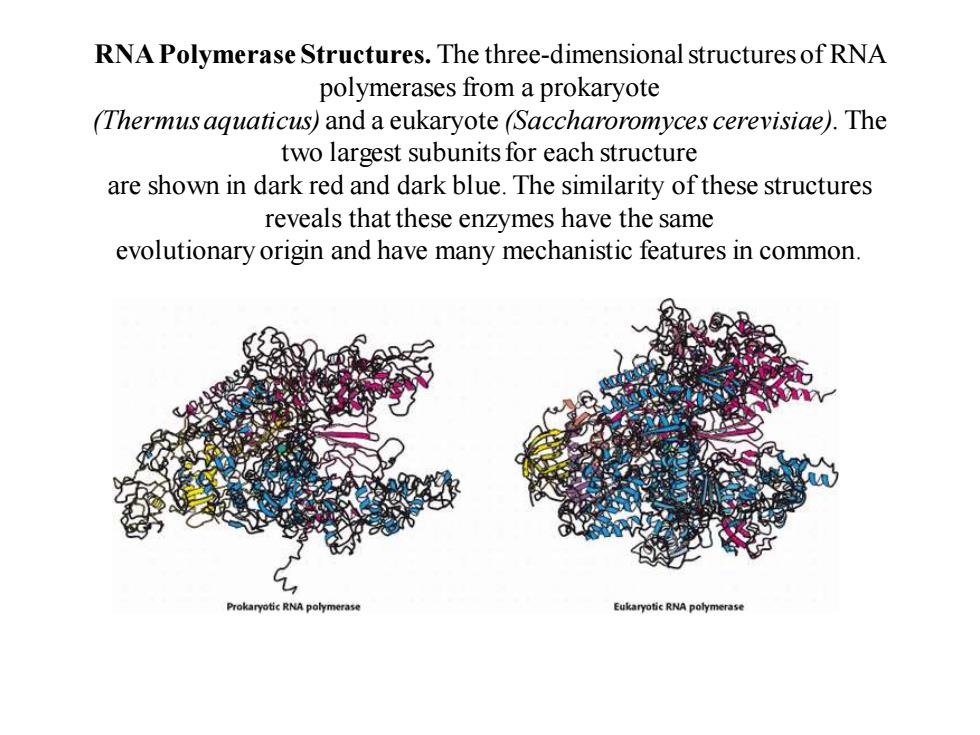
RNA Polymerase Structures.The three-dimensional structures of RNA polymerases from a prokaryote (Thermus aquaticus)and a eukaryote (Saccharoromyces cerevisiae).The two largest subunits for each structure are shown in dark red and dark blue.The similarity of these structures reveals that these enzymes have the same evolutionary origin and have many mechanistic features in common. Prokaryotic RNA polymerase Eukaryotic RNA polymerase
RNA Polymerase Structures. The three-dimensional structures of RNA polymerases from a prokaryote (Thermus aquaticus) and a eukaryote (Saccharoromyces cerevisiae). The two largest subunits for each structure are shown in dark red and dark blue. The similarity of these structures reveals that these enzymes have the same evolutionary origin and have many mechanistic features in common
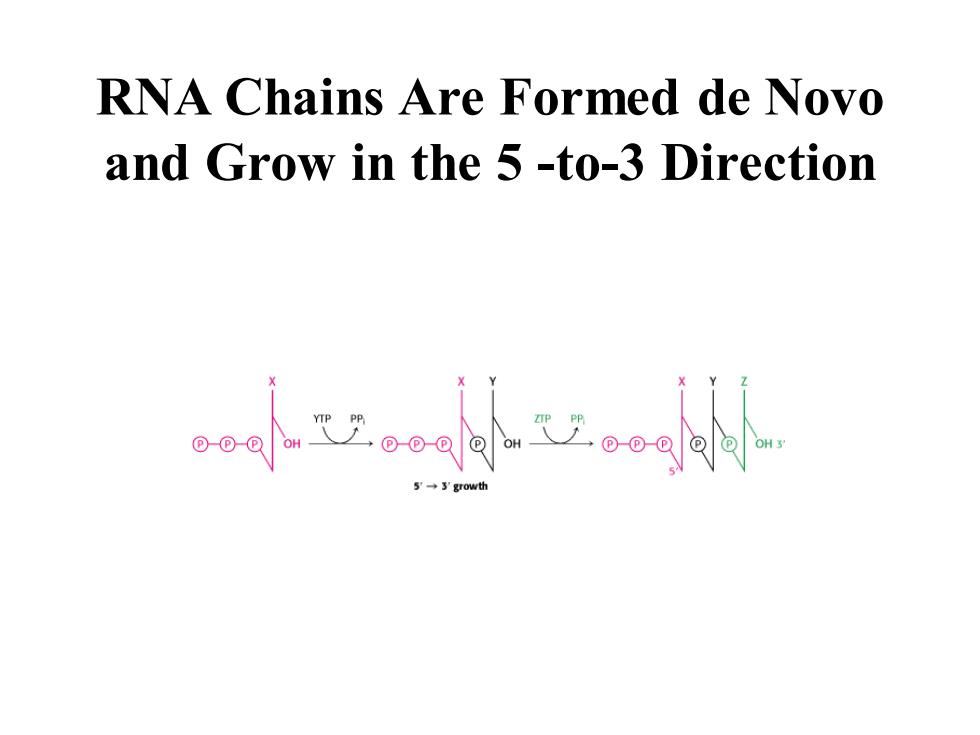
RNA Chains Are Formed de Novo and Grow in the 5 -to-3 Direction 小2
RNA Chains Are Formed de Novo and Grow in the 5 -to-3 Direction
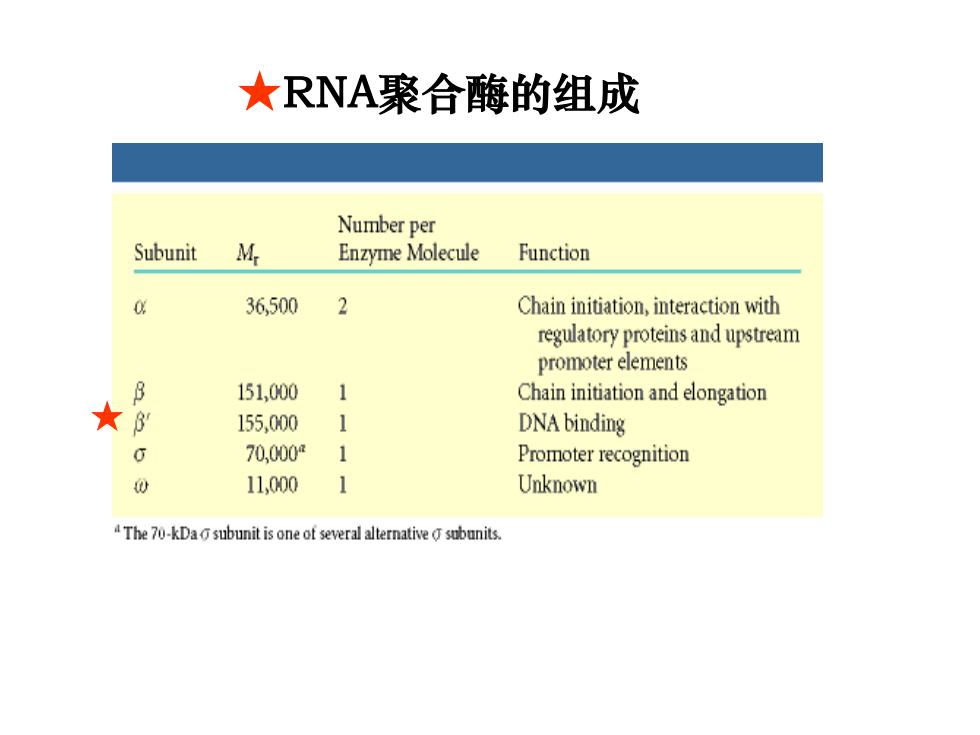
★RNA聚合酶的组成 Number per Subunit M Enzyme Molecule Function a 36,500 2 Chain initiation,interaction with regulatory proteins and upstream promoter elements 151,000 1 Chain initiation and elongation ★8 155,000 1 DNA binding 0 70,000 1 Promoter recognition 0 11,000 Unknown The 70-kDasubunit is one of several alternative subunits
★ ★RNA聚合酶的组成